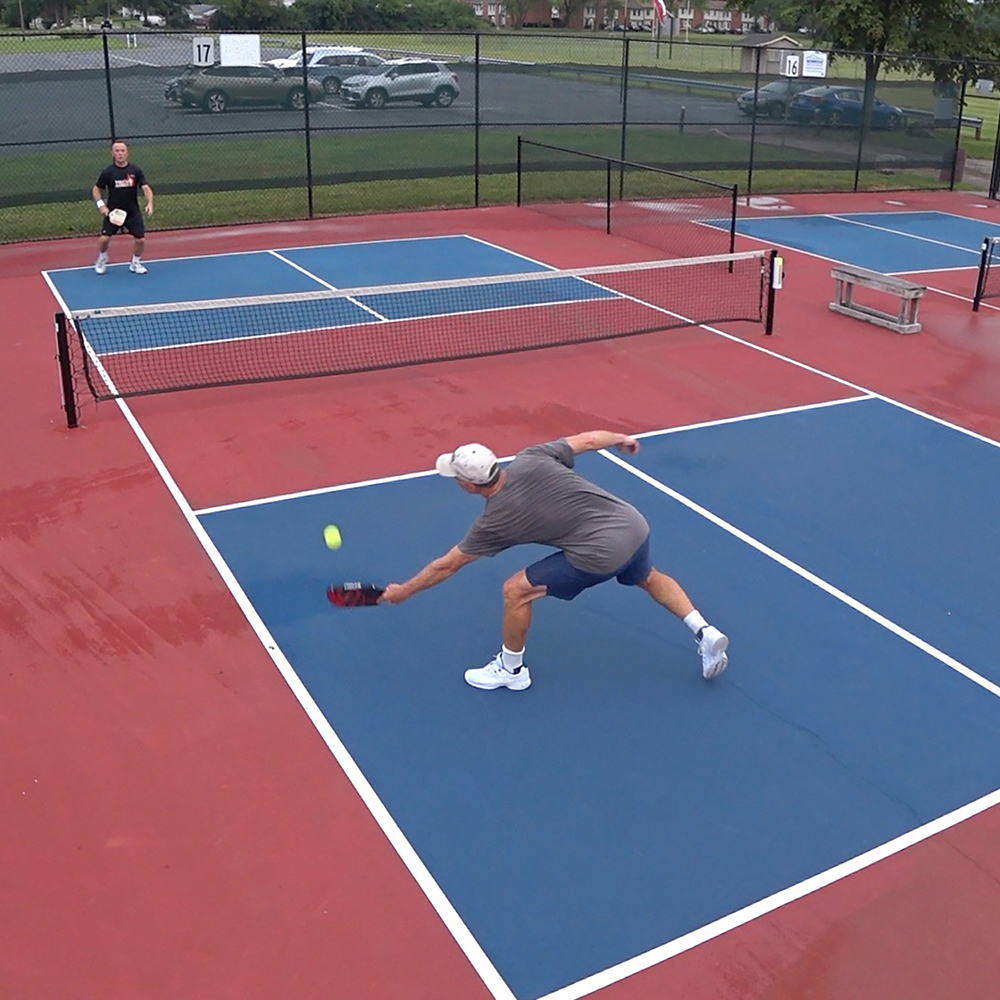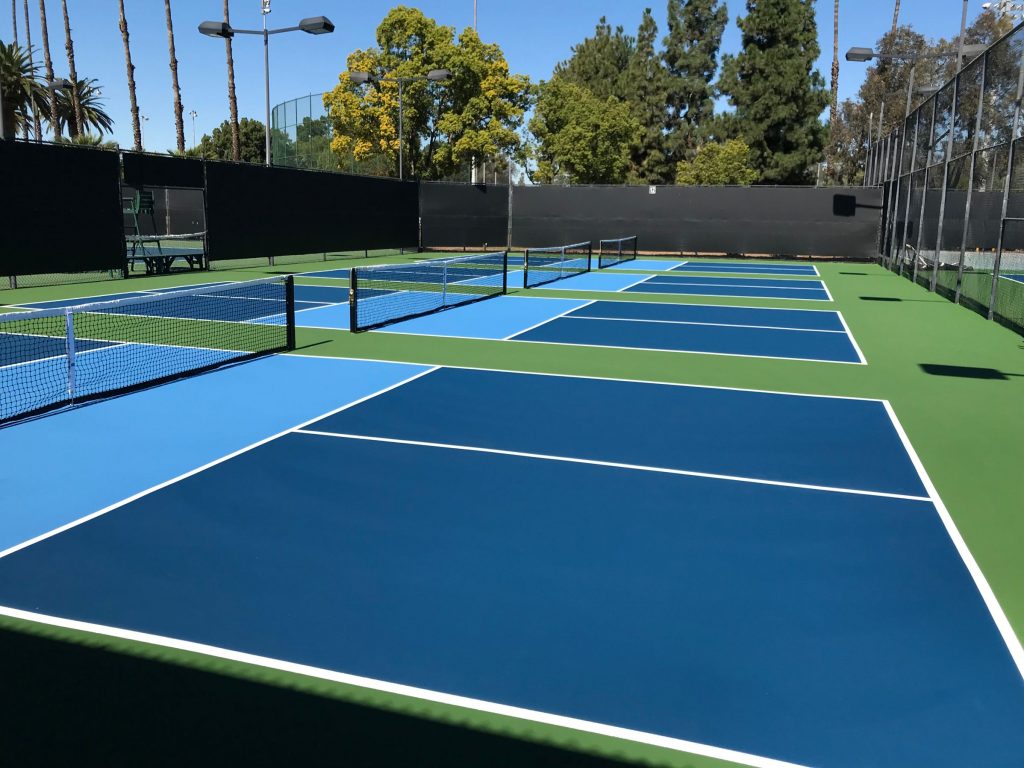How Local Rules Impact Your Pickleball Court Construction Plans
How Local Rules Impact Your Pickleball Court Construction Plans
Blog Article
From Layout to End Up: Your Overview to Structure a Pickleball Court
Creating a pickleball court is a complex job that requires a critical technique, starting with the option of an ideal location that stabilizes ease of access and engagement. Product selection additionally plays a significant duty in guaranteeing the court's resilience and performance.
Picking the Right Place
When intending to develop a pickleball court, it is important to continually think about the area, as it plays a vital role in the general performance and enjoyment of the facility. Picking a site that is quickly obtainable enhances involvement, ensuring that players can comfortably get to the court without significant traveling barriers (Pickleball court construction). In addition, distance to suburbs, parks, or neighborhood facilities can foster a sense of neighborhood involvement and rise usage
The terrain is an additional crucial aspect; a level, well-drained area lessens upkeep concerns and provides a risk-free having fun surface area. Staying clear of locations prone to flooding or too much wind will also improve the having fun experience. Consider the sun's course throughout the day; positioning the court to decrease glow can dramatically enhance visibility for players.
Noise levels should be assessed, as locating the court near loud environments or high-traffic roads may interfere with the having fun experience. Lastly, zoning licenses and guidelines must be assessed to ensure compliance with local legislations. By thoroughly assessing these aspects, one can safeguard a place that not only meets sensible demands but also boosts the general enjoyment of pickleball.

Designing Your Court Layout
After choosing an ideal location for your pickleball court, the next action involves making an effective court design that maximizes functionality and player experience. Begin by adhering to the official dimensions set forth by the U.S.A. Pickleball Association, which dictate a court size of 20 feet broad by 44 feet long for both singles and doubles play.

Next, place the court to decrease sunlight glare, ideally straightening it north-south, which aids maintain exposure during video games. Pay focus to ease of access, guaranteeing paths for players, spectators, and maintenance devices.
If your layout consists of numerous courts, space them effectively to lower noise and disruption throughout play, while additionally enabling spectator areas. Lastly, integrate assigned areas for seating, storage, and features such as hydration terminals. Thoughtful planning of these aspects will produce a welcoming and practical atmosphere for gamers of all ability degrees.
Selecting Materials and Surfaces
How can the right choice of products and surface areas improve the gameplay experience on your pickleball court? Choosing suitable materials and surfaces is essential for optimal efficiency, safety and security, and long life of your court. One of the most frequently utilized surfaces consist of asphalt, concrete, and specialized sporting activities ceramic tiles, each offering unique advantages.
Asphalt supplies a cost-efficient alternative, using a smooth surface that permits excellent sphere bounce and traction. Concrete, while more pricey, provides toughness and very little maintenance, making it suitable for high-traffic areas. For those looking for sophisticated performance, specialized sporting activities ceramic tiles are available in numerous colors and appearances, made particularly for pickleball. These tiles supply exceptional grasp and padding, decreasing the risk of injury.
Moreover, think about the influence link of surface color and structure on presence and gameplay. Brilliantly colored surfaces boost ball exposure, while distinctive surfaces can assist regulate the speed of the sphere, accommodating diverse having fun designs. Ultimately, the option of products and surfaces need to align with your budget plan, wanted visual appeals, and the degree of play you wish to fit, making certain a quality experience for all players.
Building And Construction Actions to Follow
Beginning on the building of a pickleball court calls for careful planning and execution to ensure a high-grade playing surface. Begin by marking the dimensions of the court, which determines 20 feet by 44 feet for doubles play. Dig deep into the location to a deepness of about 4 to 6 inches, making certain proper drainage and a degree foundation.
Next, set up a steady base utilizing smashed rock or crushed rock, compacting it completely to produce a solid foundation. When the base is set, apply a concrete slab, ensuring it is at least 4 inches thick. Smooth the surface area for optimum playability, permitting it to heal for the advised time, generally around 28 days.

Last Touches and Upkeep
Completing the building of a pickleball court entails important final touches and continuous upkeep to make certain durability and optimal performance. First, guarantee that the surface is appropriately healed and without particles. A complete cleansing eliminates dirt, dirt, or any type of materials that might affect gameplay. Furthermore, use a high-grade court coating to boost grip and shield versus wear.
Following, inspect the net and blog posts for correct positioning and tension. A well-maintained internet is essential for reasonable play, so modifications may be necessary after first use. Install border lines utilizing resilient, weather-resistant paint to keep exposure in time.
Routine maintenance is essential to maintaining your court (Pickleball court construction). Set up regular evaluations to examine for surface area fractures, fading lines, or water drainage issues. Prompt fixings will protect against minor problems from rising right into significant problems
Conclusion
In recap, the successful building and construction of a pickleball court involves a systematic method, beginning with the choice of an ideal location and cautious design of the court design. The selection of materials significantly influences the court's resilience and performance, while adherence to well established building steps ensures quality implementation. Regular upkeep and the application of high-quality coverings are essential for protecting the court's condition, thereby providing an optimal having fun experience for all individuals.
How can the ideal choice of materials and surfaces boost the gameplay experience on your pickleball court?Getting started on the building and construction of a pickleball court requires cautious preparation and execution to make certain a top notch playing surface.After curing, repaint the court lines using high-grade, outdoor-grade additional reading paint, adhering to the official measurements for pickleball courts.Finishing the building and construction of a pickleball court involves vital final touches and continuous maintenance to guarantee longevity and ideal efficiency.In summary, the successful building and important source construction of a pickleball court involves a systematic strategy, beginning with the option of an appropriate location and cautious layout of the court format.
Report this page